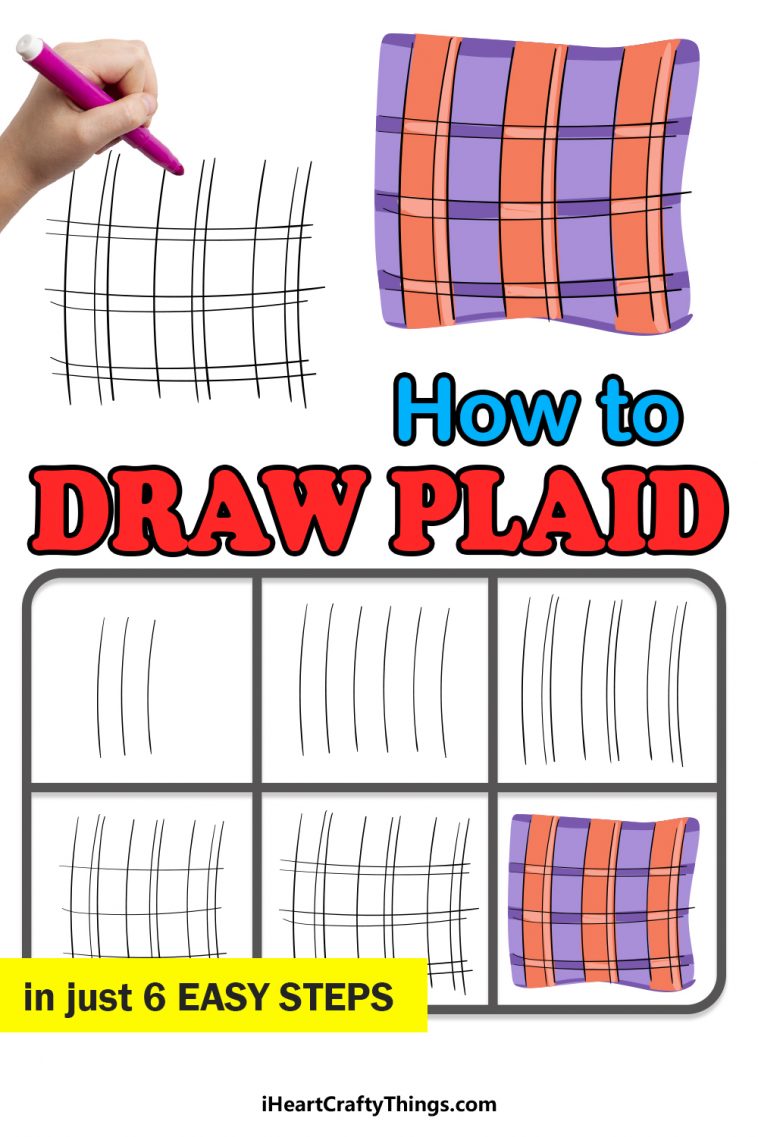Plaid drawing
Table of Contents
Table of Contents
Are you an aspiring artist struggling to create a perfect plaid pattern? Plaid pattern drawing may seem easy, but it can be a tricky task that requires precision and patience. In this blog post, we’ll take a closer look at plaid pattern drawing and provide you with tips and tricks to help you master this popular design technique.
Pain Points of Plaid Pattern Drawing
Creating a plaid pattern can be a daunting task, especially for beginners. It requires you to draw parallel lines and intersect them at precise angles, which can easily result in crooked lines and uneven spacing. Additionally, choosing the right color combinations can be a challenge, as you need to find colors that complement each other while also creating that classic plaid look.
Target of Plaid Pattern Drawing
The target of plaid pattern drawing is to create a design with intersecting lines of different colors that give the impression of a woven fabric. This pattern is commonly used in clothing, home decor, and graphic design.
Main Points
Plaid pattern drawing can be achieved through various techniques, including drawing the lines by hand, using a ruler, or creating a digital design. To create an eye-catching plaid pattern, it’s essential to choose the right color palette, use precise measurements, and create a balanced design that’s pleasing to the eye. There are many resources available to help you learn how to draw a plaid pattern, such as tutorials, online classes, and books.
How to Draw Plaid Pattern?
When I first started drawing plaid patterns, I struggled to get my lines straight and my colors perfectly balanced. However, with practice and perseverance, I’ve learned a few tricks that have helped me improve my plaid pattern drawing skills.
 First, I recommend using a ruler and measuring the distance between each line. This will help ensure that your lines are straight and evenly spaced. Next, experiment with different color combinations to find the perfect balance of colors for your plaid design. Finally, don’t be afraid to make mistakes and practice often - the more you draw plaid patterns, the better you’ll become.
First, I recommend using a ruler and measuring the distance between each line. This will help ensure that your lines are straight and evenly spaced. Next, experiment with different color combinations to find the perfect balance of colors for your plaid design. Finally, don’t be afraid to make mistakes and practice often - the more you draw plaid patterns, the better you’ll become.
Plaid Pattern Drawing Techniques
One of my favorite plaid pattern drawing techniques is to draw a base pattern and then layer additional lines on top to add depth and dimension. This technique is called “double plaiding” and can create a more intricate and interesting design.
 Another popular technique is to create a plaid pattern digitally using design software like Adobe Illustrator or Procreate. This allows you to experiment with different color combinations and easily make edits to your design until you achieve the perfect result.
Another popular technique is to create a plaid pattern digitally using design software like Adobe Illustrator or Procreate. This allows you to experiment with different color combinations and easily make edits to your design until you achieve the perfect result.
Plaid Pattern Drawing Tips
To create a successful plaid pattern, it’s important to pay attention to the little details. Make sure your lines are straight and parallel, and that your colors complement each other. To achieve a more organic look, try adding imperfections like uneven lines or inconsistent spacing. Remember, practice makes perfect, so don’t be afraid to experiment and try new things!
Question and Answer Section
Q: What colors work best for creating a plaid pattern?
A: While there are no strict rules when it comes to plaid color combinations, colors that are opposite on the color wheel often work well together. Popular plaid color combinations include red and green, navy and white, and yellow and black.
Q: Is it possible to create a plaid pattern using only one color?
A: Yes, it’s possible to create a monochromatic plaid pattern using different shades and tones of one color. This can create a unique and subtle design that’s perfect for more minimalist projects.
Q: How can I make my plaid pattern look more realistic?
A: To make your plaid pattern look more like a woven fabric, try adding texture and shading to your design. Use different shades of each color to create depth and dimension, and experiment with different brush strokes to create a more organic look.
Q: Can I create a plaid pattern using watercolors?
A: Yes! Watercolors can be a great medium for creating a unique and colorful plaid pattern. Apply watercolor paint to paper in thin, parallel lines, and then layer additional lines of different colors on top once they’ve dried.
Conclusion
Plaid pattern drawing is a fun and versatile design technique that can add interest and texture to a variety of projects. By following the tips and tricks outlined in this blog post and practicing regularly, you can improve your plaid pattern drawing skills and create beautiful designs that are sure to impress!
Gallery
How To Draw Plaid Pattern - Bates Wilty1948
Photo Credit by: bing.com / flannel
Plaid Drawing - How To Draw Plaid Step By Step

Photo Credit by: bing.com / iheartcraftythings
Pin On Silhouette

Photo Credit by: bing.com / caluyadesign caluya
Image Result For Easy How To Draw Plaid | Pattern Design Drawing

Photo Credit by: bing.com / drawing pattern tartan tutorial plaid draw easy drawings step fashion pasta escolha
A Simple Way To Make A Plaid Pattern | Nick Cassway’s DesignBLOG

Photo Credit by: bing.com / nickcassway






